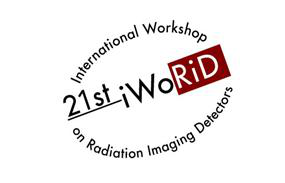One of the advantages of phase contrast x-ray imaging with respect to conventional x-ray attenuation is its capability of extracting complementary and useful physical properties of the sample under investigation. Different phase contrast methods have been developed and extensively applied at synchrotron radiation sources, one of them being Analyzer Based x-ray Imaging (ABI) [1] which utilizes...
Region-of-interest (ROI) imaging is considered an effective method to reduce the exposure dose [1]. We propose ROI-based field modulation acquisition (figure 1) to improve image accuracy of inside ROI and restore the information outside of the ROI. In this study, we compared interior image quality of field modulation CT image with conventional interior ROI reconstruction method. A prototype of...
The aim of the presented work is the evaluation of possible adaptation options for in-vivo CT scans of small animals with Timepix based micro-CT scanner. Until now the system has been used only for post mortem high-resolution imaging and dose delivered to the sample was not a crucial parameter.
Pilot measurements with thermoluminescent dosimeters (TLD) were performed and the dose rate for...
Quantitative imaging performance analysis has recently been the focus in medical imaging, which provides objective information and it could aid a patient diagnosis by giving optimized system parameters for various imaging tasks [1]. In recent years, task-driven approach has been adopted in which NEQ is combined with the imaging task and model observers to form the detectability index (d’) [2]....
Ring artifacts are common phenomena in computer tomography (CT), which can result in the degradation of CT images’ diagnostic quality and therefore should be reduced or removed. In the post-processing domain, ring artifacts are transformed into line artifacts through coordinate transformation. Many methods are based on post-processing. However, the results are not obvious in the case of...
In breast cancer studies, to discriminate between malignant and benign lesions, computer-aided diagnosis (CAD) system has been used to diagnose breast cancer based on morphological characteristics. We propose a method to non-invasively distinguish malignant or benign microcalcifications using only mammographic image based on dual-energy method [1, 2]. In this study, a photon-counting spectral...
